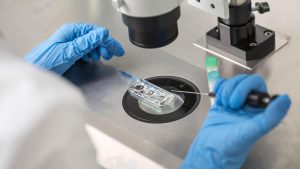Did you know that Endometriosis and Polycystic ovary syndrome (PCOS) both share similar symptoms?
It is very common for patients with endometriosis to be misdiagnosed, which is one of the reasons why treatment is often delayed. So, how can you recognise the symptoms for endometriosis?
The differences between polycystic ovary syndrome and endometriosis
PCOS and Endometriosis symptoms can be very similar, but at the same time, both disorders are different and treatment for both is also different.
Women with Endometriosis may experience pelvic pain, painful intercourse, excessive bleeding, urinary and bowel problems, fatigue, depression, and difficulties in falling pregnant. Similarly, women who suffer from PCOS may also suffer from heavy bleeding, pelvic pain and may find it difficult falling pregnant.
Although the symptoms may seem similar, both disorders are very different.
Endometriosis is a common disorder which impacts over 11 percent of women worldwide. It is a condition where the tissue that lines the uterus begins to grow in and on other parts of the body such as in the fallopian tubes, around the ovaries, bladder, uterosacral ligaments, bowel and vagina.
In some severe cases, endometriosis can spread to areas outside the pelvic cavity such as the appendix, diaphragm and both large and small intestines. As the tissue begins to thicken and bleed during the menstrual cycle, patients who suffer from endometriosis may also experience pain, inflammation and trouble falling pregnant naturally.
Unlike Endometriosis, PCOS is a hormonal disorder that affects 8-13% of women of reproductive age and is characterised by irregular periods, increased androgen levels, multiple cysts in ovaries, heavy bleeding, ovulation problems and weight gain.
It is possible to have both endometriosis and PCOS together, in fact studies from 2011 have shown there are strong links between high levels of androgens and insulin in patients with PCOS and increased levels of estradiol which can increase the risk of endometriosis.
The treatments for endometriosis and PCOS are different, which is why it is so important to ensure you receive the correct diagnosis. Treatment for endometriosis essentially focuses on reducing estrogen levels and helping to manage the pain associated with the disease. PCOS treatment on the other hand, aims at helping to stimulate ovulation in patients and to reduce androgen levels.
Both diseases are very common in women of childbearing age and can be managed if diagnosed correctly. Although both disorders can make it hard to fall pregnant naturally, patients have been able to achieve a normal healthy pregnancy through the use of specific medications, effective surgery and assisted reproductive treatments.






